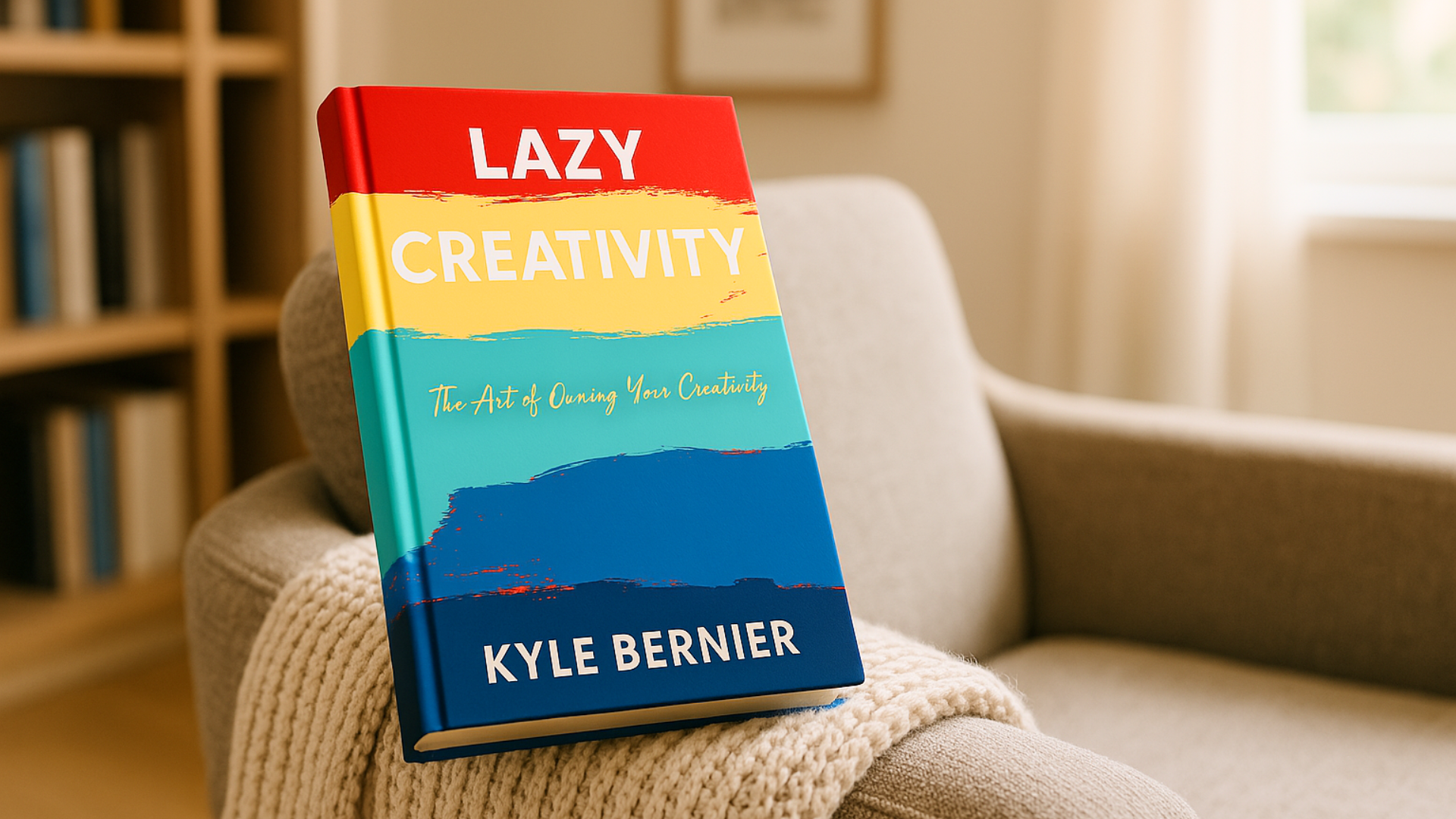Lazy Creativity Helps You Start Without the Pressure

Book Review: Lazy Creativity by Kyle Bernier
A gentle and honest invitation to show up creatively, even when you feel like doing nothing at all
In Lazy Creativity, Kyle Bernier offers a rare kind of creative handbook. It makes space for fatigue, resistance, imperfection, and the often messy reality of daily life. Rather than glorifying relentless hustle or chasing big breakthroughs, Bernier encourages a more compassionate and flexible relationship with creativity. His message is clear: creativity belongs to everyone, and it can thrive in quiet, modest, and deeply personal ways.
This book is part memoir, part creative support guide, and part pep talk for those who need a nudge to get started. Bernier writes with candour and humility, replacing pressure with permission. He reframes creative practice as something human and accessible, not something reserved for the most disciplined or inspired.
What the book promises
Bernier promises that readers can show up creatively as they are, without waiting for perfect conditions. His concept of “Lazy Creativity” is not about being careless or passive. It is about starting small, embracing imperfection, and trusting that even low-energy, inconsistent effort still counts.
The book offers encouragement and tools to help readers identify their creative impulses, commit to regular practice, and develop a personal definition of success. More than anything, Bernier aims to help people see themselves as creative, even if they are just beginning or returning after a long break.
What the book delivers
The book delivers a compassionate, reflective, and often funny look at what it means to live a creative life in real-world conditions. It is divided into three sections: Getting Started, Continuing Creativity, and Moving Forward. Each section addresses common challenges such as self-doubt, fear of failure, inconsistent motivation, and burnout.
Bernier draws from his own creative process to share practical lessons and thoughtful observations. He writes about creativity as something that helps with healing, coping, boredom, and expression. His focus is not on results but on process. He reminds readers that showing up in small ways can be just as meaningful as finishing big projects.
He also discusses “quiet creativity,” the kind that is personal, private, and not shared on social media. This idea is particularly powerful in a culture that often ties creative value to visibility or external recognition.
Style and structure
The book’s structure is loose and flexible. Each chapter can be read on its own, and readers can move through the material in any order. Bernier’s voice is casual, conversational, and friendly. He writes like someone who understands creative resistance and wants to help others move through it with kindness, not criticism.
There are no strict frameworks or rigid exercises. Instead, the book offers suggestions, stories, and gentle reflections. Bernier uses simple metaphors drawn from everyday life to explore creative habits. For example, he compares creativity to houseplants and oatmeal. These are relatable, low-stakes, and consistent rather than dramatic.
This informality gives the book a welcoming tone, especially for readers who feel intimidated by traditional advice or who are weary from overextended productivity culture.
Where the book shines
Bernier’s greatest strength is his empathy. He speaks directly to people who feel tired, uninspired, or overwhelmed. He reassures them that creativity does not need to be brilliant or constant to matter. The idea that small creative actions are enough is repeated often, and it feels like the book’s heartbeat.
His honesty is also refreshing. He does not present himself as someone with flawless routines or unshakable confidence. He writes about his own resistance and laziness without shame, showing that these experiences are normal rather than failures.
The sections on embracing boredom, allowing ugly work, and nurturing a creative mindset are especially effective. Bernier’s approach takes the pressure off and instead focuses on building a practice that feels good, even if it looks messy.
Light limitations
Readers looking for a more traditional structure or step-by-step process may find the book’s informality challenging. There are few systems or frameworks, and the repetition may feel unpolished to those expecting a highly edited or academic text.
The tone is intentionally laid-back, which supports the book’s theme, but it may not suit everyone. Some readers might prefer a more formal or polished writing style, especially if they are used to structured guidance.
Additionally, while the book includes prompts and reflections, they are open-ended rather than directive. Readers seeking accountability or measurable results may need to pair this book with other planning or goal-setting tools.
Final thoughts
Lazy Creativity is a supportive and kind companion for anyone navigating the often unpredictable path of creative work. Kyle Bernier offers a refreshingly honest voice that validates how hard it can be to begin and reminds us that beginning anyway is enough.
This book is a quiet antidote to pressure and perfectionism. It encourages a relationship with creativity that is forgiving, steady, and real. Whether you are picking up your tools for the first time or simply need to hear that your small efforts are still meaningful, this book will meet you there.
Highly recommended for artists, writers, and creatives who want to reconnect with their practice on their own terms, without waiting for the perfect moment.